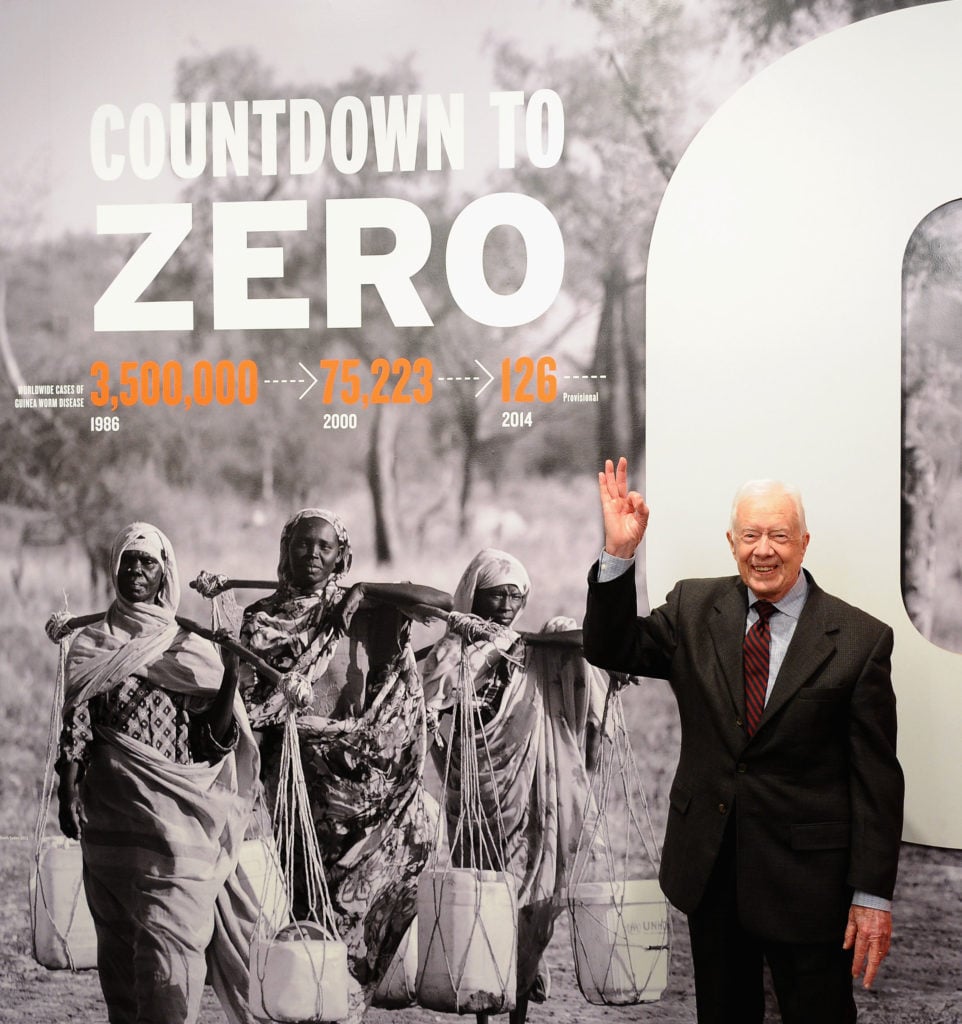People
Jimmy Carter Visits Museum of Natural History for New Exhibition Opening


Cait Munro

Former president Jimmy Carter made an appearance at the American Museum of Natural History on January 12 in celebration of the new exhibition “Countdown to Zero: Defeating Disease.”
ArtDaily reports that during his appearance, Carter announced that the number of cases of the Guinea worm disease (also known as dracunculiasis) dropped to just 126 worldwide in 2014, a decrease of over 99.9 percent since the Carter Center, the nongovernmental organization he helped found in 1982, began working to eradicate the disease four years later. At the time, an estimated 3.5 million people in Asia and Africa suffered from the debilitating condition, which is caused by drinking contaminated water.
The Carter Center assisted in the development of the exhibit, which opened to the public yesterday. The former president was joined at the reception by museum president Ellen V. Futter, Dr. Donald Hopkins of the Carter Center, and curator Mark Siddall.
“As a library of biodiversity, the Museum has a responsibility to our visitors to inform them about biodiversity and our relationships to it—and disease is part of that biodiversity,” said Siddall, who travelled to South Sudan with the Carter Center in 2013. “Some of the early work figuring out the life cycle of parasites was work that was done here. Without that knowledge, we wouldn’t be able to intercede.”
Carter, who recently celebrated his 90th birthday, hopes to see the full eradication of the disease within his lifetime. “It’s a despicable disease. And it was in such remote villages that no one wanted to take on the task,” he told NPR when asked why the Carter Center chose to take on the Guinea worm. “Twenty-six thousand five hundred villages were affected—and [the Carter Center] has been to every one of them.”
“Countdown to Zero: Defeating Disease” is on display at the American Museum of Natural History January 13–July 12, 2015.